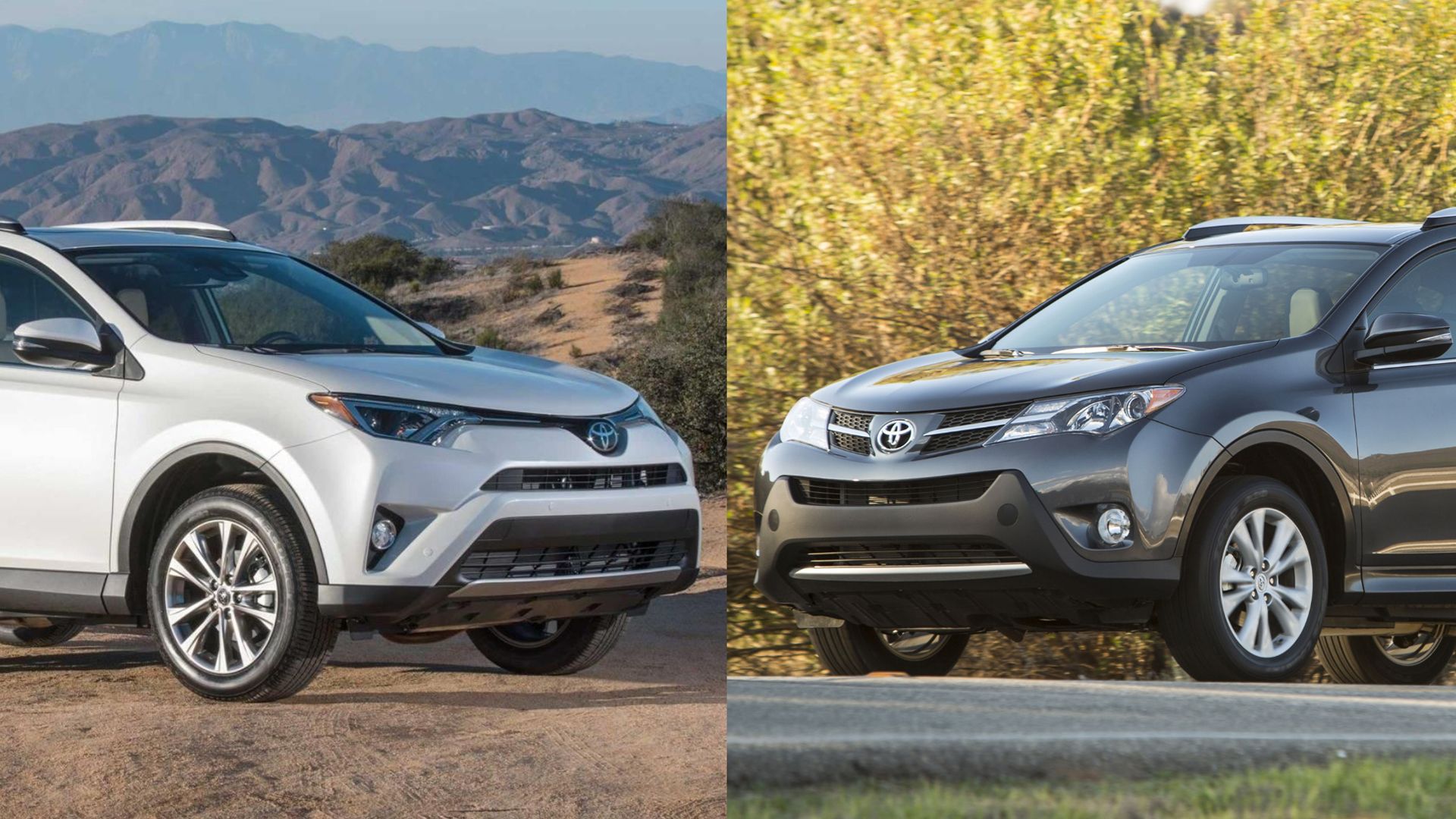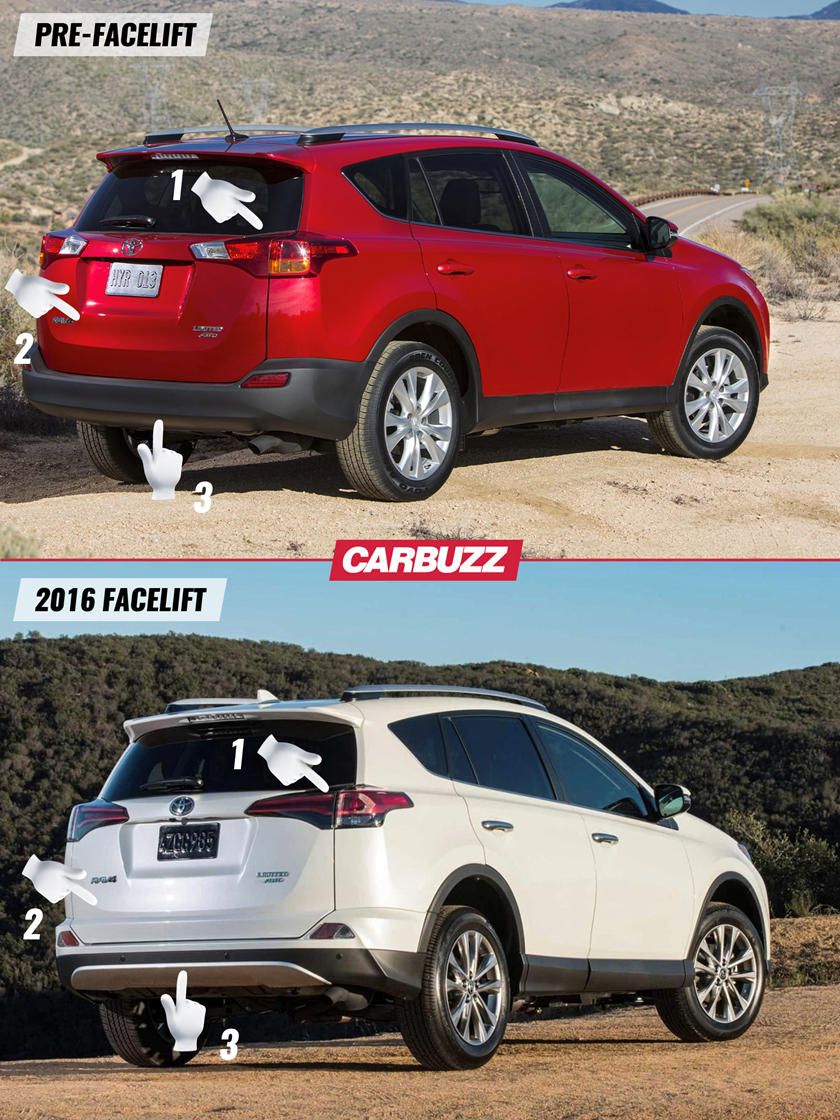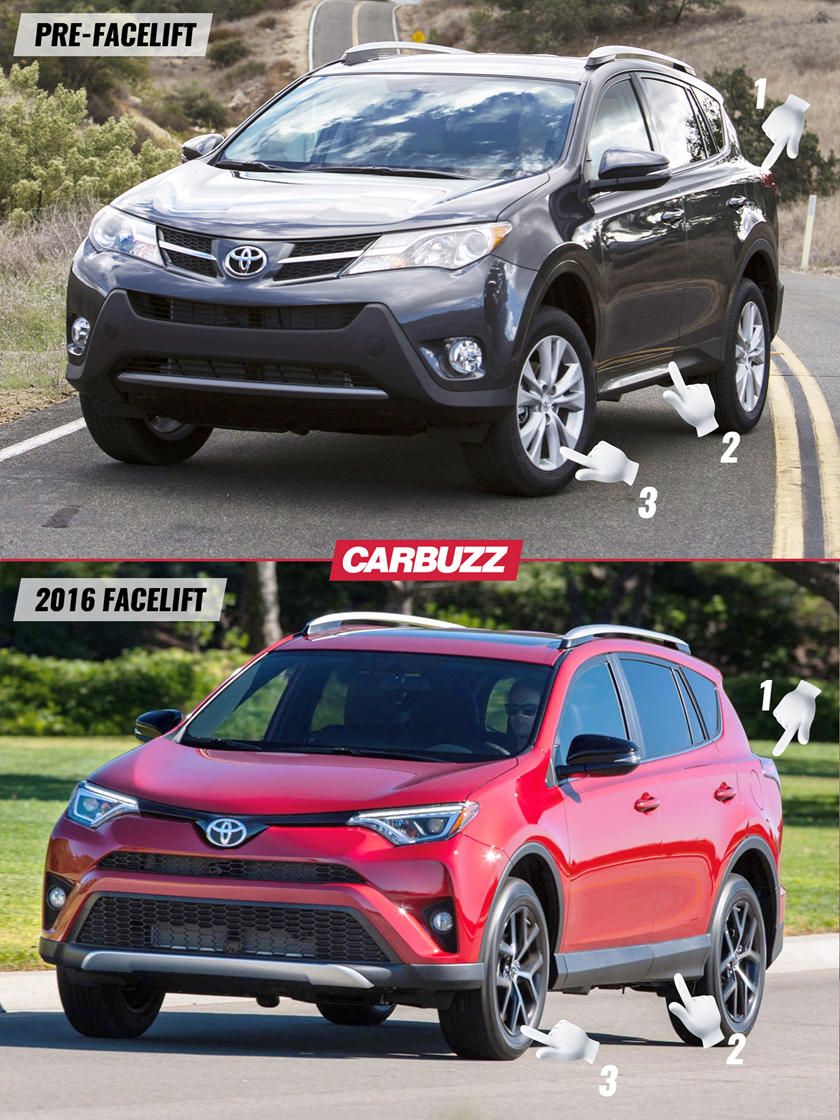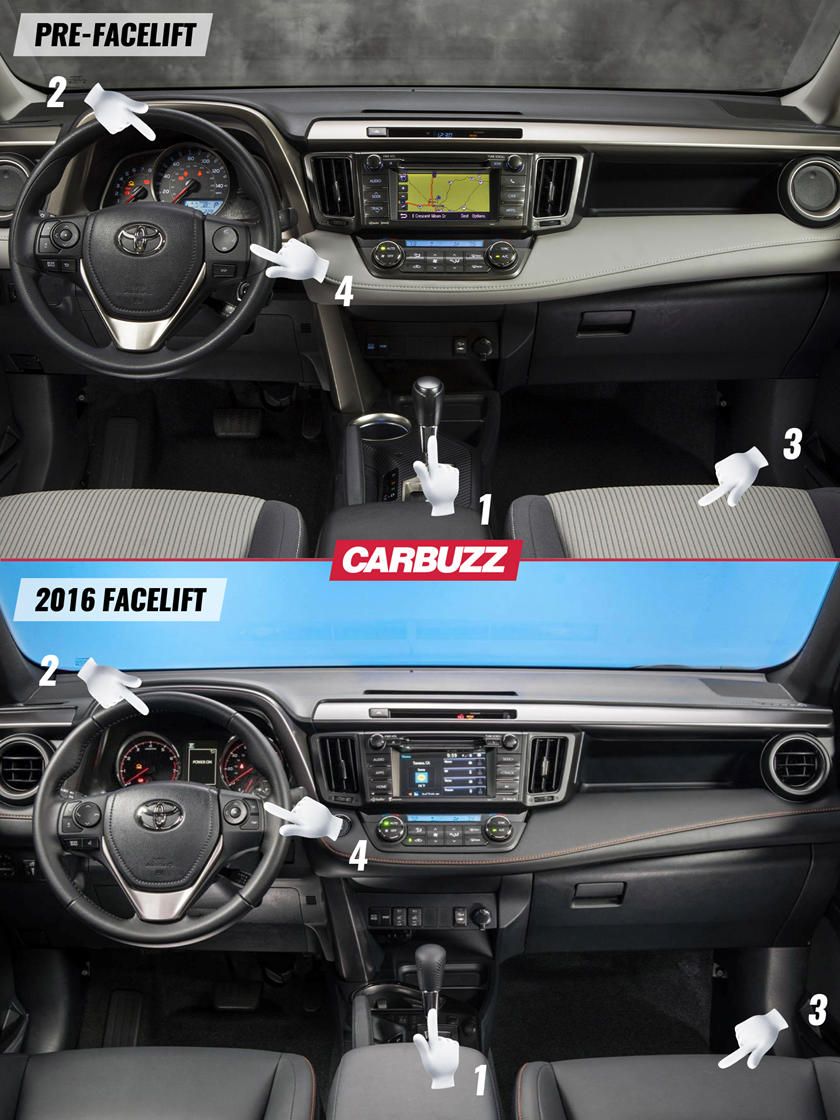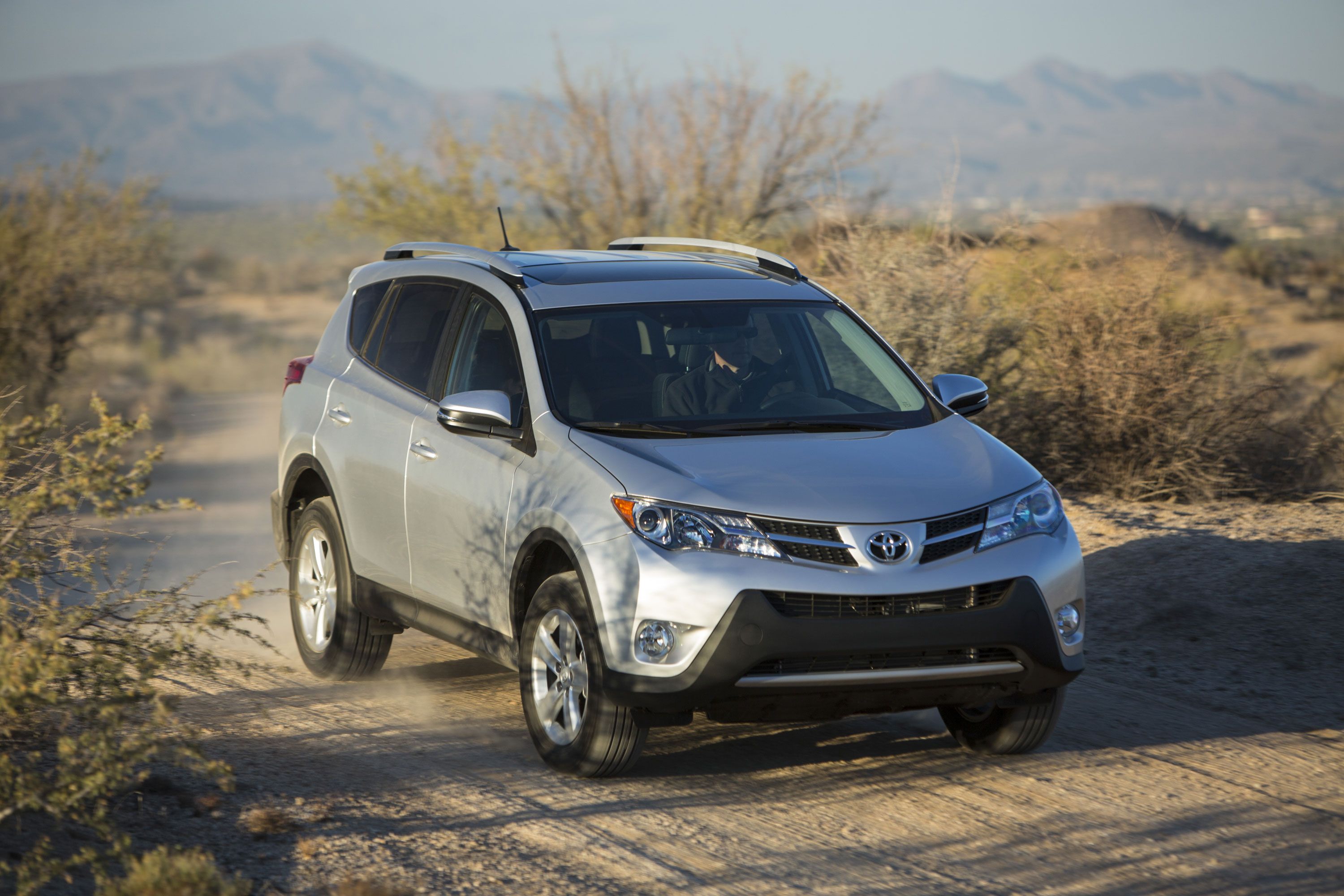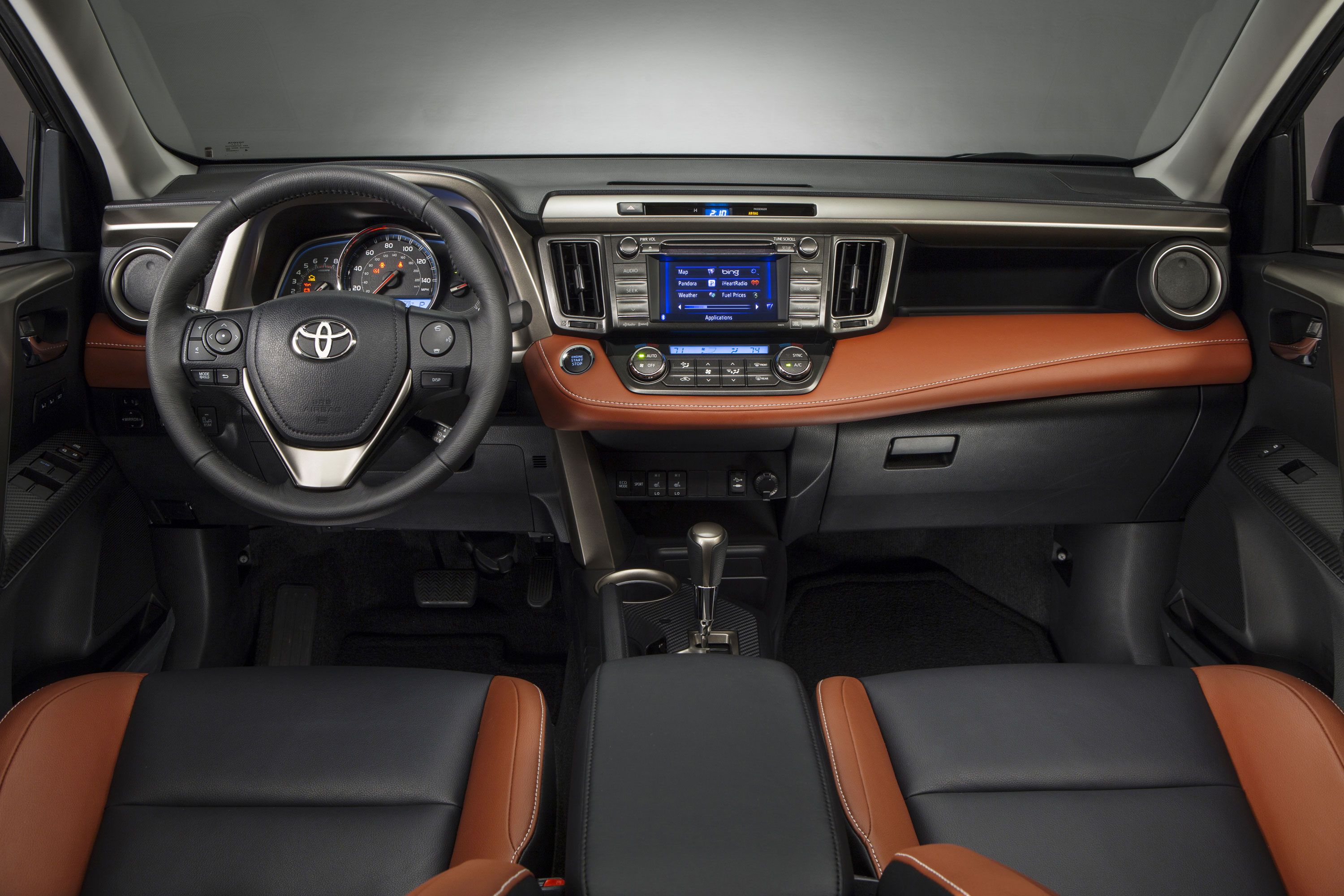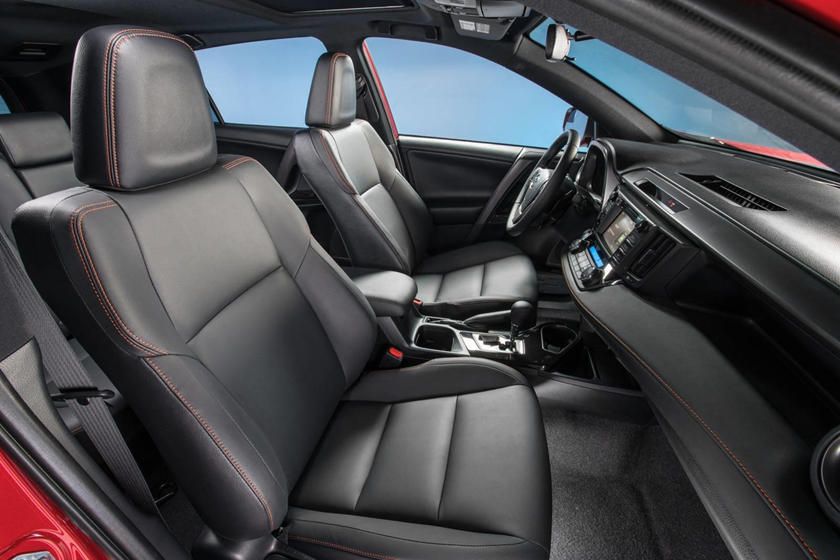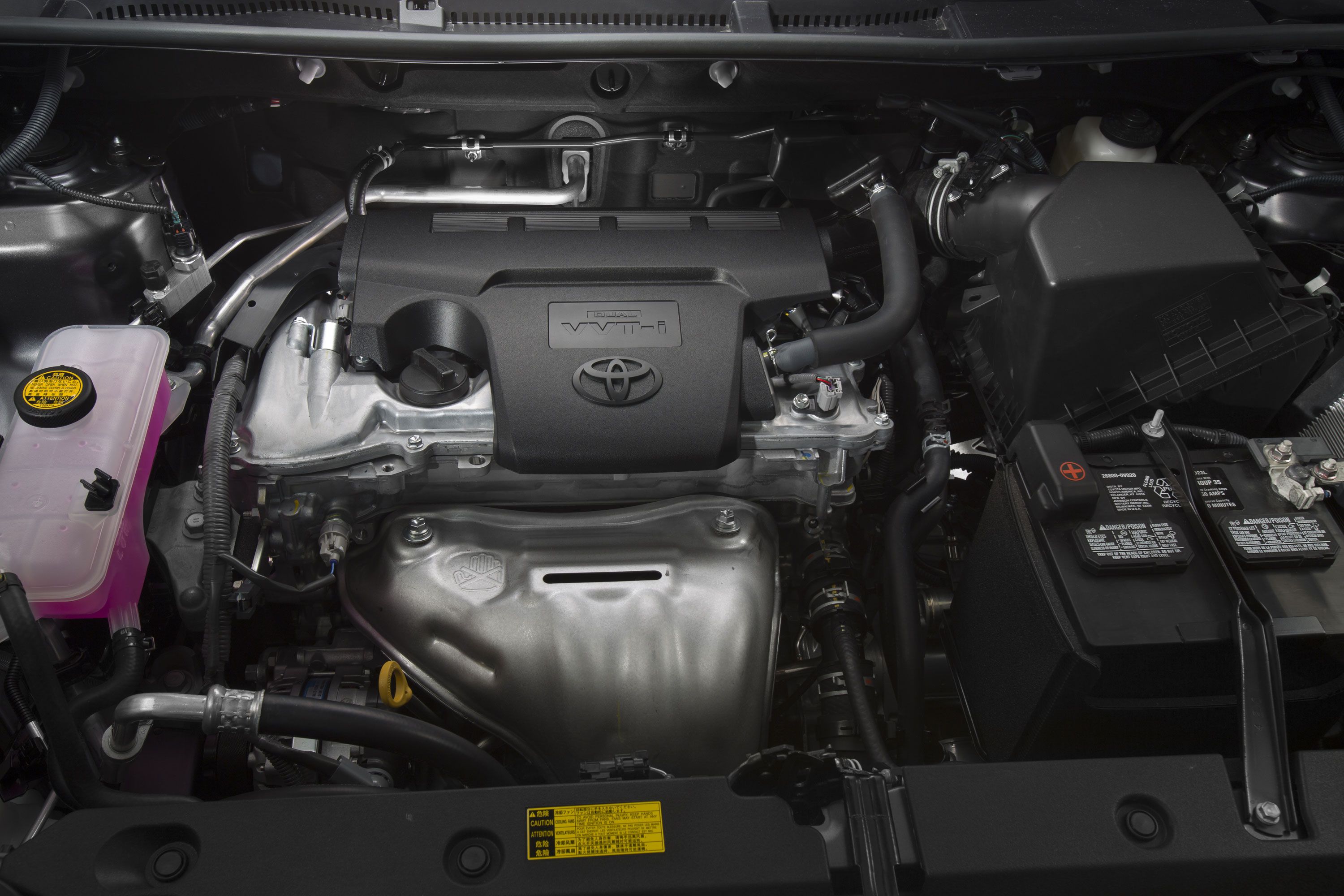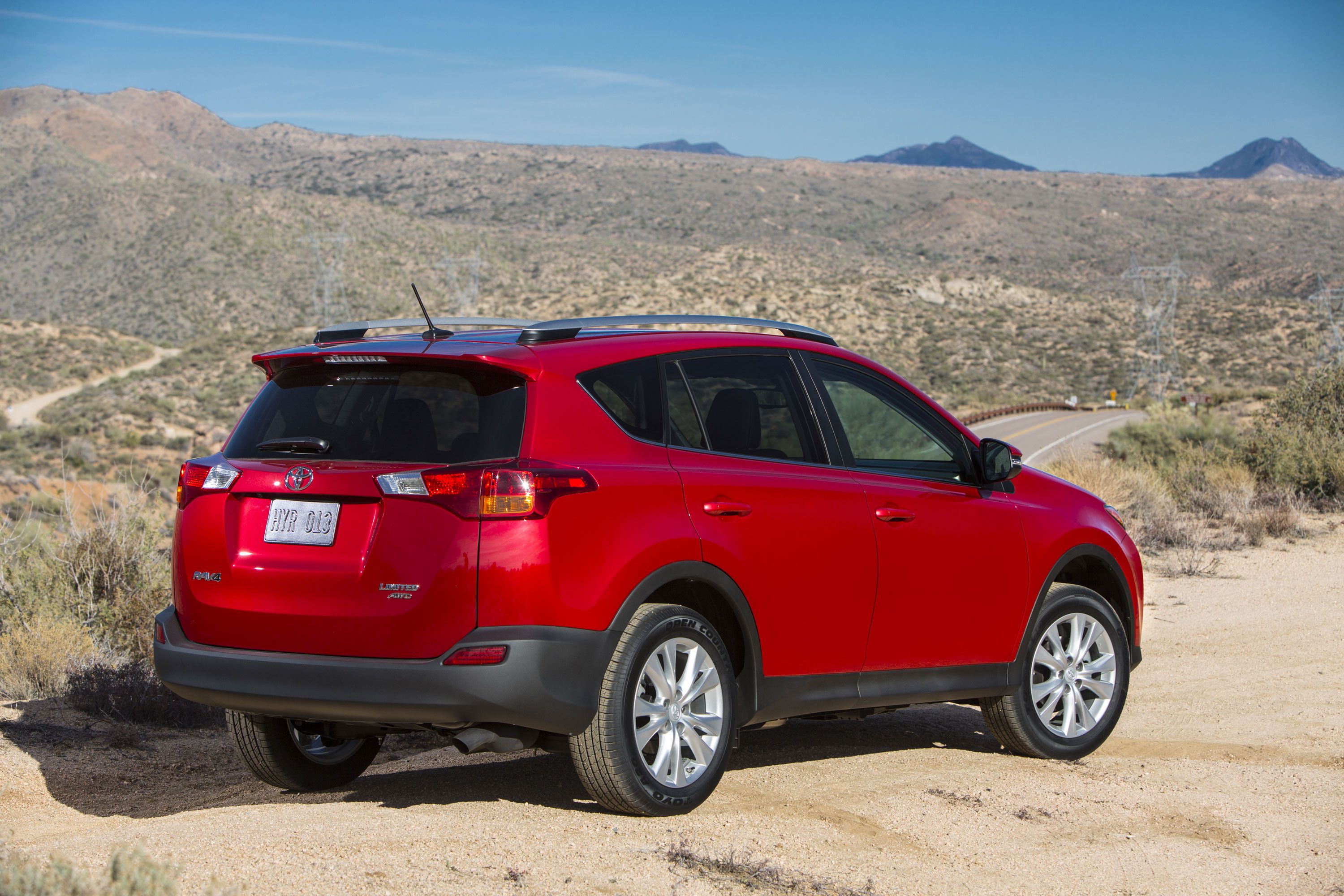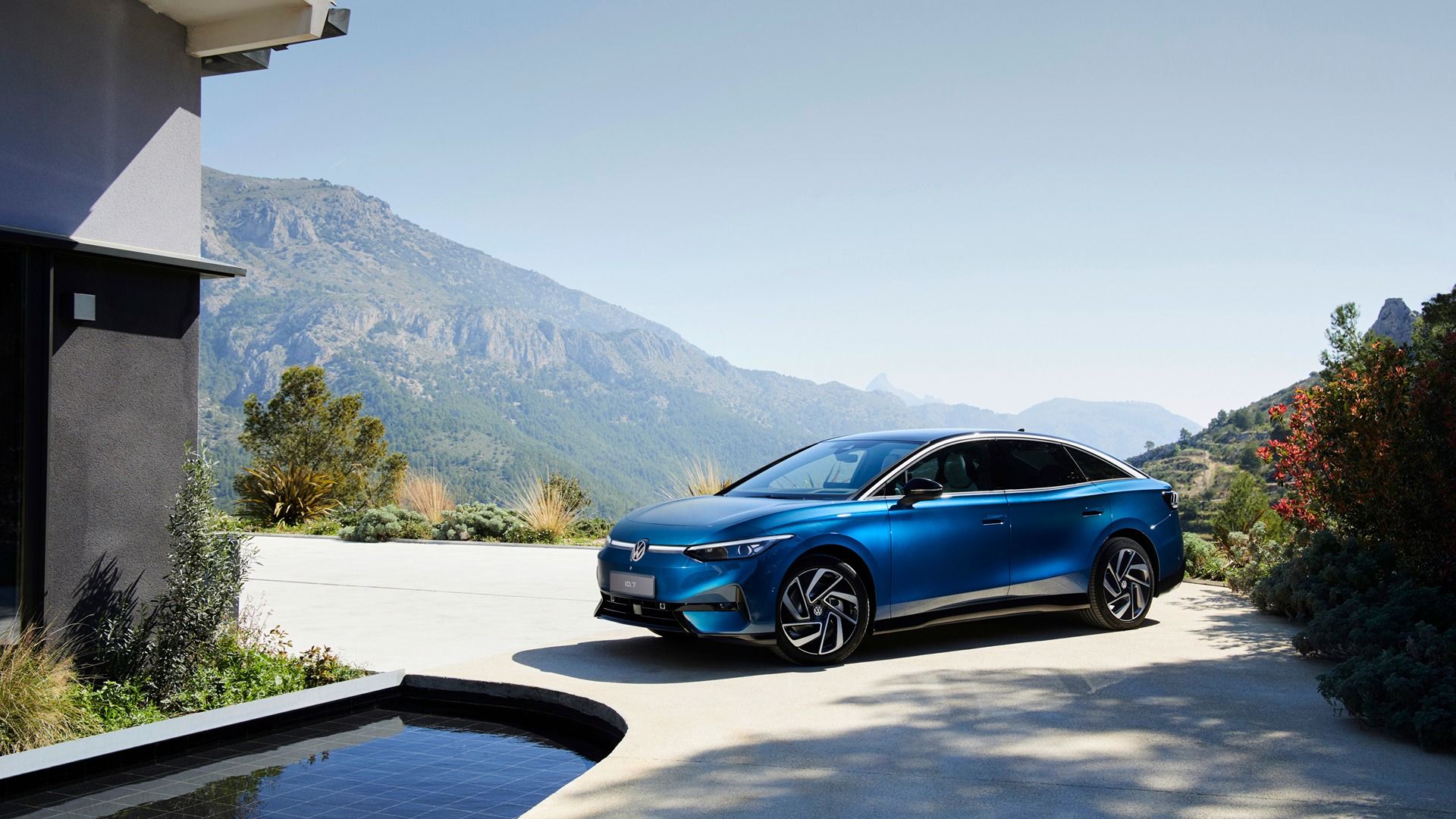4th-Gen RAV4: What Owners Say
- One of the most-lauded features of the 4th generation RAV4 is its reliability. Consumer Reports gives the SUV a rating of ‘above average’ for reliability and even for its first model year, its J.D. Power rating for quality and reliability was 86 out of 100. This is mostly down to its simple and proven mechanicals, such as the naturally aspirated, indirect-injection 2.5-liter engine and the conventional six-speed automatic transmission.
- Fuel efficiency is very good, thanks to the 4th gen RAV4 shrinking in size and losing the previous-generation XA30’s V6 engine and outdated four-speed automatic transmission. The new 2.5-liter four-cylinder and six-speed automatic meant that the RAV4 weighed in with impressive EPA economy figures of up to 23/30/26 mpg city/highway/combined for the gas-powered models – 4 mpg better than the old V6’s combined figure.
- Owners love that the Toyota RAV4 4th generation is so safe. From the start, it came as standard with a backup camera and almost all the model years receive either a Top Safety Pick or Top Safety Pick+ award from the IIHS.
- There have been some complaints about quality and most of these revolve around substandard paintwork that chips easily, somewhat cheap interior finishes that scratch easily, problems with the glove box not opening, audio systems that shut off and reset randomly, and a navigation display that is almost impossible to see in direct sunlight.
- There have been some complaints about the six-speed automatic transmission shifting into reverse harshly on high-mileage cars, but this is often only a warn-out valve in the valve body. Slightly more serious is the 2013-2015 RAV4 transmission fault where intermittent shuddering is evident during the torque converter’s flex lockup at speeds between 25 and 50 mph, for which Toyota issued a service bulletin and extended the warranty cover.
- Without a 4th gen RAV4 lift kit, off-road ability is limited and this vehicle is meant mainly for normal roads. If you want a true off-roader, look elsewhere.
Toyota RAV4 Fourth Generation Facelift
The 4th generation Toyota RAV4 was fairly comprehensively facelifted for the 2016 model year, receiving restyled front and rear ends, rocker panels, wheels, and a sporty new SE trim.
The RAV4 gets dynamic new slim-line front headlights with integrated LED daytime running light strips (1), a narrower grille (2), a new bumper (3), a completely restyled lower fascia with angular air intakes, and new fog-light slots for a more modern and streamlined look4. High-end models get silver skid plates. The brand-new sporty SE trim gets a more aggressive front bumper, among other trim-specific revisions.
There are new LED taillight clusters with a smoked look and a two-color finish – the indicators now present as clear lights and only light up orange when lit (1). There is also a revised tailgate that is styled into the rear bumper (2), and a new rear bumper with silver skid plates on some trims (3).
The revised front and rear treatment can also be spotted from the side, especially the smoked wrap-around taillights (1). New rocker panels that now stand out from the bodywork with a center crease that gently slopes upward can also be seen (2), as well as the new alloy-wheel designs (3).
The interior never really felt upmarket, but Toyota makes an effort and adds some soft-touch surfaces to key points and higher-quality materials. The cupholders can now accommodate even tall mugs with handles and there is a sunglass holder and a restyled gear shifter too (1), as well as additional 12-volt and USB ports. The gauge cluster is also updated (2) and the new SE trim benefits from SofTex leatherette upholstery as standard, a black headliner, and red dial pointers (3). The 2018 RAV4 dashboard, multi-information display, odometer display, and steering-wheel buttons were largely the same as that of the 2016 facelift (4).
Engine, Transmission, and Drivetrain
At launch, the Toyota RAV4 fourth generation was available with one engine – a 2.5-liter naturally aspirated four-cylinder with 176 hp and 172 lb-ft of torque – mated to a six-speed automatic transmission. Front-wheel drive was standard on all trims and all-wheel drive optional. Combined EPA fuel economy was 30 mpg for FWD and 29 mpg for AWD models. In terms of the 2013 Toyota RAV4 gas-tank size and miles-per-gallon ratings, the former stayed at 15.9 gallons, just like the 2012 model, but the latter was improved from 24 to 26 mpg on the combined cycle for the FWD four-cylinder. The 2016 and 2017 Toyota RAV4 gas tank size stayed the same, but fuel economy dropped to 25 mpg combined.
The 2016 model year saw the addition of a hybrid variant with an Atkinson-cycle variant of the same 2.5-liter gas engine mated to an electric motor and CVT transmission for a combined output of 194 hp and a combined EPA consumption figure of 32 mpg.
2.5-liter Four-Cylinder Gas Engine
|
Horsepower |
Torque |
Transmission |
|---|---|---|
|
176 hp |
176 lb-ft |
Six-speed automatic |
The naturally aspirated 2.5-liter four-cylinder engine in the fourth generation RAV4 is part of Toyota’s AR engine family that was first introduced in 2008. It is a simple, robust engine with a long-stroke design that favors mid-range torque over all-out performance. Independent tests have shown that an AWD variant needs around 9.2 seconds to reach 60 mph. This engine was left untouched for the XA40 RAV4’s entire production run, as was the standard six-speed automatic transmission.
2.5-liter Four-Cylinder Hybrid Gas Engine
|
Horsepower |
Torque |
Transmission |
|---|---|---|
|
194 hp |
206 lb-ft |
Continuously variable transmission |
Just in time for the 2016 facelift, a hybrid RAV4 was launched, using a 150-hp Atkinson-cycle version of the normal 2.5-liter four-cylinder RAV4 engine mated to three electric motors and a 1.6-kWh nickel-metal-hydride battery. This setup produces a system output of 194 hp and 206 lb-ft of torque and is mated to a CVT automatic transmission. The hybrid is all-wheel drive only, but it’s an unconventional setup where the rear wheels are driven by the third electric motor only and not by the engine – there is no driveshaft. Despite weighing over 4,000 pounds, the hybrid improves on the non-hybrid’s 0-60-mph sprint by around a second. However, combined fuel economy improves to 32 mpg.
2013-2018 Toyota RAV4 Real MPG
The EPA’s real-world fuel-economy figures published for older vehicles such as the XA40 RAV4 makes for some interesting reading and often demonstrates how modern turbocharged engines perform relatively poorly in real-world conditions. However, while there is no turbocharger in sight on the fourth generation RAV4, it is also unable to match the official claims of 25-26 mpg with actual, user-reported gas mileage ranging from 22.7 to 23.7 mpg. The hybrid gets far closer though, with a combined EPA figure of 32 mpg achievable in real-world driving according to independent tests. User figures are not yet published by the EPA for the hybrids, because not enough data is available.
|
EPA MPG |
REAL-WORLD MPG * |
|
|---|---|---|
|
2.5 NA four-cylinder FWD |
23/30/26 |
22.7 combined |
|
2.5 NA four-cylinder AWD |
22/29/25 |
23.3-23.7 combined |
|
2.5 NA four-cylinder hybrid AWD |
34/30/32 |
N/A |
* Real-world mpg and mpge figures are provided by the EPA. Once a car has been on sale for a significant period of time, the EPA gets real-world figures directly from the customer base. These figures are then provided on the EPA website. Real-world figures are not available for certain models due to a lack of sales, or not enough people partaking in this after-sales survey.
Safety
Judging by the NHTSA scores, the fourth generation RAV4 seems hardly any safer than its predecessor, scoring the same four stars overall for most tests except for the side crash, which garnered five stars. It fared well at the IIHS though, with the 2013, 2015, and 2018 models scoring a Top Safety Pick award and the 2016 and 2017 models a Top Safety Pick+. Every Toyota RAV4 4th generation review generally reports favorably on safety. The 2014 model is missing here because it provided inadequate protection in the small-offset crash test. Toyota strengthened the driver’s side in 2015, explaining 2016’s good result. However, the passenger side was not strengthened and all model years fare poorly in the passenger-side small-offset test. From the outset, all fourth generation models came with stability control, a backup camera, tire-pressure monitoring, and seven airbags, including a driver’s knee airbag. Blind-spot monitoring and rear cross-traffic alert were only offered as an optional extra at launch and only on the Limited trim. Additional safety features were added over the years and by 2018, even the base model came as standard with the Toyota Safety Sense P suite, which includes forward-collision warning, automatic emergency braking, adaptive cruise control, lane-keep assist, and automatic high beams.
US NHTSA Crash Test Result
|
Overall Rating |
4/5 |
|
Frontal Barrier Crash Rating |
4/5 |
|
Side Crash Rating |
5/5 |
|
Rollover Rating |
4/5 |
2013-2018 Toyota RAV4 Trims
The RAV4 kicked off with three trims for the 2013 model year, namely LE, XLE, and Limited. This remained unchanged until the 2016 facelift, when the sporty SE trim was added, as well as the Hybrid and Limited XLE. In its final 2018 model year, the SE and Limited were dropped and Hybrid LE and Adventure trims were added.
2013-2018 LE
|
Engine |
Transmission |
Drivetrain |
|---|---|---|
|
2.5-liter inline-four |
Six-speed automatic transmission |
FWD or AWD |
The 2013 LE base model comes standard with seven airbags, stability control, a backup camera, and ABS, but very few other safety features. Just like the rest of the range, it’s motivated by a 176-hp/172-lb-ft naturally aspirated four-cylinder engine mated to a six-speed automatic transmission with FWD as standard and AWD optional. It also runs on 17-inch steel wheels with plastic covers and features power-folding mirrors, automatic halogen headlights, keyless entry, and rear privacy glass. Inside, it’s fitted with cloth seats, a manually tilting/telescoping steering wheel, air-conditioning, and cruise control. The infotainment display measures 6.1 inches and incorporates Bluetooth connectivity, auxiliary and USB inputs, and a six-speaker audio system. For the 2017 model, Toyota Safety Sense P was made standard and includes automatic high beams, automatic emergency braking, dynamic cruise control, and lane-departure warning.
2018 LE Hybrid
|
Engine |
Transmission |
Drivetrain |
|---|---|---|
|
2.5-liter inline-four |
Six-speed automatic transmission |
FWD or AWD |
The hybrid version of the LE joined the range as a 2018 model and is equipped with the 194-hp hybrid powertrain and a continuously variable transmission. The hybrid hardware impinges slightly on interior volume and cargo capacity drops by 2.8 cubic feet to 35.6 cubes with the rear seats up. A 4th gen Toyota RAV4 with the back seat folded down has 70.6 cubes of storage. The standard specifications are the same as the gas LE.
2013-2018 XLE
|
Engine |
Transmission |
Drivetrain |
|---|---|---|
|
2.5-liter inline-four |
Six-speed automatic transmission |
FWD or AWD |
The XLE gets various additional features, such as 17-inch alloy wheels, roof rails, a power sunroof, fog lights, and heated side mirrors. Inside, it boasts sportier front seats with French stitching and dual-zone automatic climate control. The 2014 model gained sun-visor extenders, chrome interior door handles, and satellite and HD radio. The power liftgate became optionally available from the 2015 model year. The 2016 model features the Entune Audio Plus package that upgrades the infotainment system by adding the Scout GPS Link navigation phone-integration app and Siri Eyes Free for iPhones. The 2017 XLE has various driver-assistance features via the newly standard Toyota Safety Sense P suite.
2016-2018 XLE Hybrid
|
Engine |
Transmission |
Drivetrain |
|---|---|---|
|
2.5-liter inline-four |
Continuously variable transmission |
AWD |
The XLE Hybrid joined the facelifted range as a 2016 model and besides the hybrid powertrain, has the same standard specifications and equipment levels as the gas XLE trim.
2016-2018 SE
|
Engine |
Transmission |
Drivetrain |
|---|---|---|
|
2.5-liter inline-four |
Six-speed automatic transmission |
FWD or AWD |
The SE launched as a sportier 2016 model along with the RAV4’s facelift and is based on the XLE trim. It has racier exterior styling, more aggressive fascias, LED headlights, and sporty suspension settings that ruins the normally excellent ride quality of the RAV4. It runs on 18-inch alloy wheels and comes as standard with SofTex leatherette upholstery, paddle shifters, rear cross-traffic alert, and blind-spot monitoring. 2018 models also have navigation, the higher ride height of the Adventure trim, an upgraded backup camera, a power driver’s seat, and heated front seats.
2017-2018 SE Hybrid
|
Engine |
Transmission |
Drivetrain |
|---|---|---|
|
2.5-liter inline-four |
Continuously variable transmission |
AWD |
The SE Hybrid joined the lineup as a 2017 model and applies all the standard equipment and sporty flourishes of the gas SE to the AWD hybrid format.
2013-2018 Limited
|
Engine |
Transmission |
Drivetrain |
|---|---|---|
|
2.5-liter inline-four |
Six-speed automatic transmission |
FWD or AWD |
As the top trim, the Limited arrived in 2013 with a bunch of standard features including 18-inch alloy wheels, a power liftgate, a leather-trimmed steering wheel, SofTex leatherette upholstery, heated front seats, an eight-way electrically adjustable driver’s seat with memory, an auto-dimming rear-view mirror, keyless entry, and push-button start. For 2014, a new optional Technology Package made various advanced driver-assistance features available, such as auto high beams, blind-spot assist, and lane-departure warning. For the 2016 facelift, the Limited also got a larger high-resolution 7-inch touchscreen, adaptive cruise control, smartphone app integration, and navigation. For 2017, Toyota Safey Sense P became standard and displaces the Technology Package, including everything in that package as standard.
2016-2018 Limited Hybrid
|
Engine |
Transmission |
Drivetrain |
|---|---|---|
|
2.5-liter inline-four |
Continuously variable transmission |
AWD |
The Limited hybrid is the same as the Limited gas trim in terms of its specification and standard features and the same as the XLE Hybrid in terms of its powertrain and luggage volume.
2017-2018 Platinum
|
Engine |
Transmission |
Drivetrain |
|---|---|---|
|
2.5-liter inline-four |
Six-speed automatic transmission |
FWD or AWD |
The Platinum trim only joined the range as a 2017 model above the Limited and adds a heated steering wheel, a JBL premium audio system, a surround-view camera, and trim-specific interior finishes. On the outside, it features body-color side moldings, front and rear parking sensors, and a foot-activated hands-free power liftgate.
2018 Adventure
|
Engine |
Transmission |
Drivetrain |
|---|---|---|
|
2.5-liter inline-four |
Six-speed automatic transmission |
FWD or AWD |
As a swansong and last hurrah to the fourth generation RAV4, the Adventure model joined the range in the last production year with a higher ground clearance (up from 6.1 to 6.5 inches), a standard tow-preparation package, 18-inch alloy wheels, and rugged exterior styling features such as black headlight bezels and fog-light surrounds, fender flares, and lower body cladding. Inside, it features all-weather mats, a 120-volt power outlet in the cargo compartment, a leather-trimmed shift knob, and model-specific interior trim panels.
4th-Gen RAV4 Features
|
LE |
XLE |
SE |
LIMITED |
PLATINUM |
ADVENTURE |
|
|---|---|---|---|---|---|---|
|
Back-Up Camera |
S |
S |
S |
S |
S |
S |
|
Bluetooth Connection |
S |
S |
S |
S |
S |
S |
|
Leather Seats |
N/A |
N/A |
N/A |
N/A |
N/A |
N/A |
|
Apple CarPlay |
N/A |
N/A |
N/A |
N/A |
N/A |
N/A |
|
Keyless Entry |
S |
S |
S |
S |
S |
S |
|
Keyless Start |
N/A |
N/A |
N/A |
N/A |
S |
N/A |
|
HD Radio |
N/A |
S |
S |
S |
S |
S |
|
Alloy Wheels |
N/A |
S |
S |
S |
S |
S |
|
Sunroof |
N/A |
S |
S |
S |
S |
S |
Interior, Trim And Practicality
The 4th generation Toyota RAV4 might have lost its predecessor’s third row, but ample space remains. In fact, there is so much room inside that tall adults will fit easily, even in the back and even three abreast won’t have too much to complain about over short distances. Cargo capacity is generous for this class, with 38.4 cubic feet available with the rear seats in use and 73.4 cubes with them folded down. The hybrid models do have a little less luggage space due to the under-floor hybrid gubbins, but it’s not impacted too badly, their figures being 35.6 and 70.6 cu. in., respectively.
The core trims over the years were the LE, XLE, and Limited, with the SE added as a 2016 model, the Platinum as a 2017 model and the adventure as a 2018 model. The hybrid range started with the 2016 facelift and by 2018, there were four hybrid trims: LE, SE, XLE, and Limited. The LE is rather sparsely equipped and is thin on safety features unless you opt for the 2017 model. Equipment and amenities improve as you go up through the range and in the newer model years, but leather upholstery and smartphone integration are notable by their absence across all trims and years. The SE was a misstep, with unnecessarily harsh suspension in the type of vehicle that does not have to be sporty.
|
TRIM |
LE |
XLE |
SE |
LIMITED |
PLATINUM |
ADVENTURE |
|---|---|---|---|---|---|---|
|
Black cloth seats |
S |
N/A |
N/A |
N/A |
N/A |
N/A |
|
Black, Nutmeg, Ash cloth seats |
N/A |
S |
N/A |
N/A |
N/A |
N/A |
|
Black, Ash cloth seats |
N/A |
N/A |
N/A |
N/A |
N/A |
S |
|
Black, Cinnamon leatherette seats |
N/A |
N/A |
S |
N/A |
N/A |
N/A |
|
Black, Cinnamon, Nutmeg, Ash leatherette seats |
N/A |
N/A |
N/A |
S |
N/A |
N/A |
|
Black, Cinnamon, Ash leatherette seats |
N/A |
N/A |
N/A |
N/A |
S |
N/A |
4th-Generation RAV4 Maintenance and Cost
The RAV4 is the top-selling passenger vehicle in the US after trucks and as such, there are hundreds of thousands of them on US roads. It stands to reason that strong local sales over the past 50 years means that Toyota is firmly established in this country and this is borne out by its footprint of nearly 1,500 US dealerships. It is also known for building tough and reliable cars and the RAV4 XA40 should give long and trouble-free service if properly cared for. People usually want to know if the 2013, 2014, 2015, 2016, 2017, or 2018 RAV4 has a timing belt or chain and the answer is that it has a chain, which should last a long time if the car is frequently serviced.
The RAV4 should be serviced every 10,000 miles or 12 months, at which time the engine oil and filter must be replaced. Toyota stipulates that vehicles that are used under special operating conditions should have their oil replaced every 5,000 miles; these conditions include driving on gravel roads, towing, extensively idling (such as in taxi, police, or door-to-door delivery work), and repeated trips in subzero temperatures. At each of these services, the tires must be rotated and the following items must be inspected: all fluid levels, the wiper blades, and the braking system. Frequent oil replacements are a cheap and easy way to keep your engine ticking over reliably for years and it avoids problems with premature wear, the degradation of variable-valve-timing and cam-drive systems, as well as sludge formation. The same is true for the transmission and a transmission-fluid check should be performed at every service.
Keep in mind that battery packs degrade over time, but the hybrid models’ batteries should last at least ten years or 100,000 miles. The vehicle’s AWD system also relies on the battery, as the rear wheels are not driven by the engine at all. If you buy a RAV4 Hybrid that is close to the ten-year mark or has close to 100,000 miles on the odometer, make sure to budget for a battery-pack replacement and negotiate a lower price to allow for it. The lower the average temperatures in your area, the more quickly the battery will degrade. Toyota guarantees the hybrid components for eight years or 100,000 miles, whichever comes first. The replacement cost for the drive motor battery pack in the 2018 RAV4 Hybrid is more than $3,500.
The 2013-2018 Toyota RAV4 is expected to cost around $5,500 in maintenance and repairs for the first ten years of its life.
2013-2018 RAV4 Basic Service
Engine Oil Change Including Filter
|
2.5-liter gas |
|
|---|---|
|
Oil Capacity |
4.35L (4.6 quarts) |
|
Oil Type and Viscosity |
0W-20 fully synthetic oil |
|
Replacement |
Every 5,000 to 10,000 miles, depending on use |
|
Average cost |
$62-$77 |
Sparkplugs
|
2.5-liter gas engine |
|
|
Part code |
9091901259 |
|
Replacement |
Every 120,000 miles |
|
Average price |
$67 for four |
Air Filter
|
Part code |
1780138011 |
|
Average price |
$22 |
Battery
|
2.5-liter engine |
Hybrid NiMH battery pack |
|
|---|---|---|
|
Type |
Toyota OEM TrueStart 12V battery |
Nickel-metal-hydride high-voltage hybrid battery pack |
|
Part Code |
0054421171325 |
G951048080 |
|
Replacement |
Every 3-5 years |
Every 10 years |
|
Average price |
$234 |
$3,541 |
4th-Gen RAV4 Tires
Toyota RAV4 Tire Size – LE and XLE:
P225/65HR17 all-season BSW tires:
$640 per set
SE, Limited, Platinum, and Adventure
P235/55HR18 all-season BSW tires:
$868 per set
Check Before You Buy
Technical Service Bulletins according to the NHTSA. Check service book for:
The RAV4 is generally very reliable and 2013, 2014, 2015, 2016, 2017, and 2018 Toyota RAV4 door-lock, headlight, starting problems, and other defects are generally rare. Toyota RAV4 2013 automatic transmission problems were reported and seemed to have been sorted out by the 2016 model year. By 2018, Toyota RAV4 common problems such as battery, engine, hybrid, Bluetooth, and suspension problems were rarely reported. Some other minor problems that may crop up has to to with the 2013 Toyota RAV4 power liftgate and glove-box, so test these items before you buy. These problems affect later years to a lesser extent. Unless a quick and reliable diagnosis can be done, it is best to avoid any 4th gen 2013 RAV4 with its Check Engine and/or AWD light on. There are enough well-cared for examples out there, so you don’t need to take the risk. Also keep in mind that a Toyota RAV4 oil leak may be from either the engine or transmission, which could indicate further problems or dangerously low fluid levels. 2016 and 2017 RAV4 Hybrid problems are usually rare, as are those for the final 2018 model year, and affect the same areas as other RAV4s; the hybrid system seems to be very reliable. So far, there is no early-model 2013-2015 Toyota RAV4 airbag recall – the years most likely to have been affected by defective Takata airbags. By the end of its life, there were few 2018 RAV4 complaints and it was very reliable. The only 2018 Toyota RAV4 recall work that had to be done was the replacement of a label that indicates an incorrect load-carrying capacity.
4th-Gen Common Problems
Audio/Navigation/Infotainment Problems
This is one of the most common 2013-2018 Toyota RAV4 problems. Most 2015-2018 Toyota RAV4 navigation system and radio problems also apply to other years and the main gripe is that the infotainment system’s display is virtually impossible to see in direct sunlight. The product is not defective and a replacement part from Toyota will perform no better, so there is really very little you can do about this other than exploring myriad possible replacement units you can get on the aftermarket. More serious is a propensity for the infotainment systems of 2014 models to simply shut down, reset, or not switch on. Toyota will replace the system under warranty, but out of warranty, you can pay more than $1,000 for a new audio unit from Toyota. Pricing on the aftermarket will depend on the features you require and compatibility is not guaranteed, with things such as the steering-wheel controls not working with all devices. However, aftermarket devices are a lot cheaper – typically between $220 and $500. Carefully read all the reviews before taking the plunge. 2013 RAV4 Bluetooth problems such as connection failures are quite rare, but do occur occasionally.
Mileage: On average: 55,000 miles
Cost: $770
How to spot: Navigation display difficult or impossible to see in direct sunlight
Water Pump Failure
A leaky water pump that may fail has been reported on the odd fourth generation RAV4. The best way to tell that a car has a problem is a coolant leak that leaves coolant on the floor after the car has been parked. Coolant residue will probably also be observable around the area of the auxiliary belt under the engine bay where the water pump is situated.
Mileage: From 30,000 miles
Cost: $270-$500
How to spot: Signs of coolant leaks on the water pump and on the floor
Brake Problems
There have generally been relatively few 2013-2018 Toyota RAV4 recalls. One of them affecting 16,656 units, has to do with fourth generation 2013-2018 RAV4 brake problems that apply to the 2016 model year in particular. It has to do with a brake actuator that has a damaged O-ring that may leak brake fluid, leading to impaired brake performance. This work should have been done for free under the recall condition. Another minor brake problem sometimes reported on earlier years is grinding or scraping noises, usually fixed by replacing the pads and rotors. 2016 Toyota RAV4 brake problems and those for later years are rare.
Mileage: Any mileage
Cost: Recall work: free. Rotor/pad replacement: $450
How to spot: Loss of brake function or grinding/scraping noises
Air-Conditioning Problems
2013, 2014, 2015, 2016, 2017, and 2018 Toyota RAV4 air-conditioning (AC) problems mainly revolve around a mildewy or musty smell emanating from the system and not a malfunction of any kind. Various Toyota products including the Camry have suffered from this problem over the years and while it’s not serious, it’s irritating. The culprits are microbes, mold, and bacteria growing in the warm, moist environment of the evaporator and there seems to be no permanent fix for it. Toyota service bulletins going back to the ’90s outline this problem, without offering a permanent fix. The best remedy is to buy an air-conditioning disinfectant for around $10 from an auto-parts shop and spray it into your AC system’s intake at the base of the windscreen with the interior fan on low and the windows open.
Mileage: Any mileage
Cost: $10
How to spot: Moldy, mildewy smell from the AC system
Transmission Shudder
Some 2013 and 2014 RAV4 transmission and torque converter problems have been reported and these apply to 2015 models as well. In a 2013 Toyota RAV4, vibration when accelerating on a light throttle between 25 and 50 mph during converter lockup and/or light-throttle driving can occur. Typical repair costs can be close to $2,000 out of warranty, but Toyota did extend the drivetrain warranty of 2013-2015 RAV4s to eight years or 150,000 miles, so you might get the work done free of charge if your vehicle qualifies. If you are considering buying a vehicle that is out of warranty and it exhibits this problem, walk away. However, Toyota issued a 2013 Toyota RAV4 transmission and torque converter recall that also applied to the 2014 and 2015 models, so this should already have been fixed for free under the recall conditions. 2016, 2017, and 2018 Toyota RAV4 transmission problems seem to be far fewer.
Mileage: From new
Cost: $1,700
How to spot: Shudders and vibrations during light-throttle driving between 25 and 50 mph
Harsh/Delayed Reverse Selection
A delayed or harsh shift into reverse may be caused by a worn-out valve and sleeve in the valve body. While the part is not very expensive, the failure may also point to abuse or postponed transmission-fluid replacements. It is better to avoid cars with this symptom, as other problems may also be lurking. The transmission fluid must be checked at every service and replaced when necessary. The Toyota RAV4’s transmission fluid capacity is 6.9 quarts.
Mileage: From new
Cost: $200
How to spot: A harsh or delayed shift into reverse
Paint Problems
There seems to be quite a few 2013-2018 RAV4 problems in terms of the paintwork chipping and coming off, so there is reason to believe that quality is marginal in some cases. In all fairness, the average mileage of the complaints is nearly 90,000 miles. Carefully inspect a used vehicle to ensure that the paintwork is in good condition and that there is no bubbling or flaking. The cost of repairs is entirely dependent on the extent of the problem but can cost you quite a bit if many panels are affected. There are enough RAV4s out there to choose from, so avoid ones with shoddy paintwork.
Mileage: On average, 90,000 miles
Cost: Can vary
How to spot: Flaking, bubbling, signs of rust
Battery Fires
Several cases have been reported to the NHTSA of fourth generation Toyota RAV4s’ batteries shorting out and starting engine-bay fires. There seems to be an issue with the battery frame contacting the positive battery terminal and shorting out, potentially causing a fire. This can be due to improper battery installation causing the contact, or substandard front-end accident-repair work. The remedy is to ensure that your battery is properly secured in its frame and that the battery terminals are not contacting the frame. Pending the outcome of the investigation, Toyota is likely to offer a free remedy.
Mileage: Any mileage
Cost: N/A
How to spot: Visual inspection of battery-terminal clearance, otherwise sparking and smoking
Which One To Avoid
The two posers that stand out as being most compromised are the SE and Adventure. The former is unnecessarily harsh and not as sporty as it looks and the latter is not really an off-road vehicle and even comes in FWD, so the extra money it costs goes on looks and not ability. You’ll hardly notice the extra 0.4 inches of ground clearance on a dirt track. The Platinum was too expensive when new, but offers a great suite of luxuries if you can get a good deal on a 2017 model and offers lots of the modern mod-cons people expect – except of course smartphone integration.
Which One To Buy
Often, the entry-level model is the dog in the range, but the LE is perfectly adequate if you don’t mind doing without various luxury features. That said, safety is important in a family vehicle and we won’t consider anything older than a 2017 LE that at least has all the most important safety and driver-assistance features as standard. Still, the plastic hubcaps and manual air-conditioning remind one of its base status and most people would be happiest with the XLE. Go for a 2017 model, so you’ll not only get the facelift, but also the full safety suite, upgraded infotainment system, and navigation.
4th-Gen Toyota RAV4 Verdict
The fourth generation RAV4 banks on its reliability, fuel efficiency, roominess, and available hybrid models for its appeal. Its infotainment systems aren’t cutting-edge and you can forget about Apple CarPlay or Android Auto, but it does what Toyotas do best – transport you in a modicum of comfort and refinement, reliably, for years on end. On top of that, the facelift looks good and the last models’ standard features are generous compared to most of their contemporaries.

